Introduction
Navigating the complexities of modern finance requires a methodical approach to understanding and managing the intricate details of a company’s financial health. This article delves into essential strategies for Chief Financial Officers (CFOs) aimed at ensuring robust financial management and sustained business growth. From gathering comprehensive financial data to continuous monitoring and adaptation, each section provides practical advice and actionable insights.
It highlights the importance of analyzing key financial statements, evaluating critical financial ratios, and identifying organizational strengths and weaknesses. Additionally, it underscores the necessity of setting clear financial goals and developing a detailed action plan to achieve them. By embracing these practices, businesses can foster financial stability, adapt to evolving market conditions, and ultimately drive long-term success.
Gathering Comprehensive Financial Data
To perform a thorough health assessment of your business's monetary position, it's essential to collect all pertinent fiscal information, including income reports, balance summaries, and cash flow reports. Precise and current information guarantees a clear understanding of your monetary situation.
The income report provides insights into your company’s profitability over a specific period, detailing revenue and expenses. The balance sheet provides a snapshot of your economic position at a given moment, showcasing assets, liabilities, and equity. Meanwhile, the cash flow statement is vital for understanding the liquidity and operational efficiency of your business. It tracks cash inflows and outflows, revealing whether your operations generate sufficient cash or rely on external funding.
For instance, TBC Bank, a prominent institution, emphasizes the significance of accurate monetary data to improve their time-to-market for digital products, reflecting their dedication to exceptional banking experiences. Likewise, M&T Bank, with its extensive history, emphasizes the necessity of upholding high-quality monetary standards to mitigate risks associated with digital transformation.
By meticulously examining these monetary documents, you can identify trends, make informed decisions, and ensure your enterprise remains economically healthy and compliant with regulatory standards. This practice not only assists in internal management but also in persuading potential investors and stakeholders of your business's economic viability.
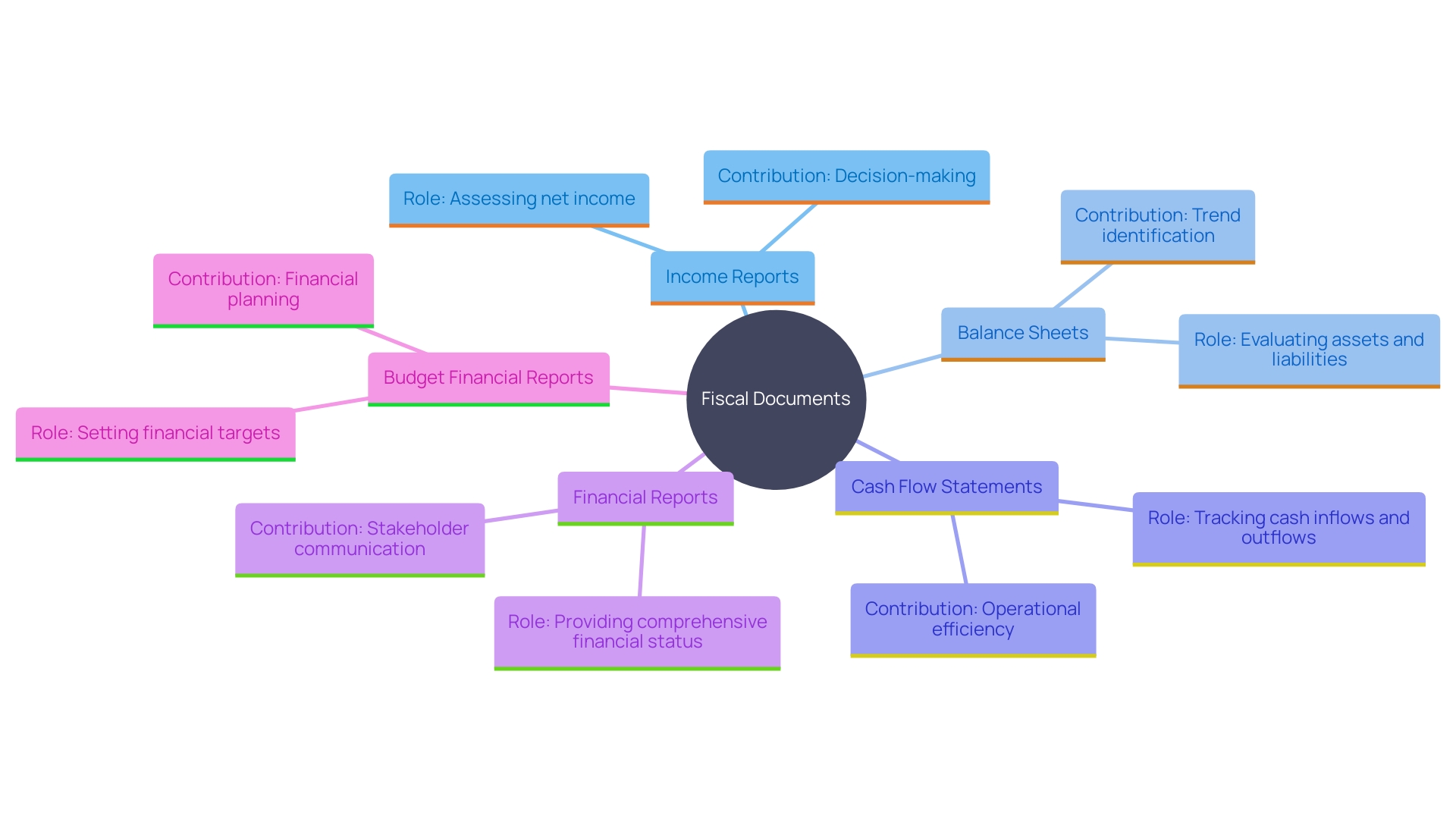
Analyzing Key Financial Statements
Once you have gathered the monetary information, the next step is to explore the key fiscal reports. The income report, or profit and loss report, highlights profitability trends and helps you understand the relationship between income and expenses. For instance, analyzing various departmental performances over a given period can reveal what affects overall profitability, providing actionable insights for strategic planning.
The balance sheet, on the other hand, offers a snapshot of your assets, liabilities, and equity at a specific point in time. 'This statement is crucial for evaluating the monetary position of the company and understanding how well it can meet its short-term and long-term obligations.'. For example, a bank’s reclassification of bonds, as revealed in its interim fiscal report, underscores the importance of adapting economic strategies to maintain stability and achieve long-term goals.
Understanding these documents allows you to make informed decisions regarding procurement, allocation, and return on investment. It also enables you to communicate financial health effectively to stakeholders, ensuring transparency and fostering trust. As companies strive for value maximization, analyzing these statements will help balance immediate operational needs with sustainable growth prospects.
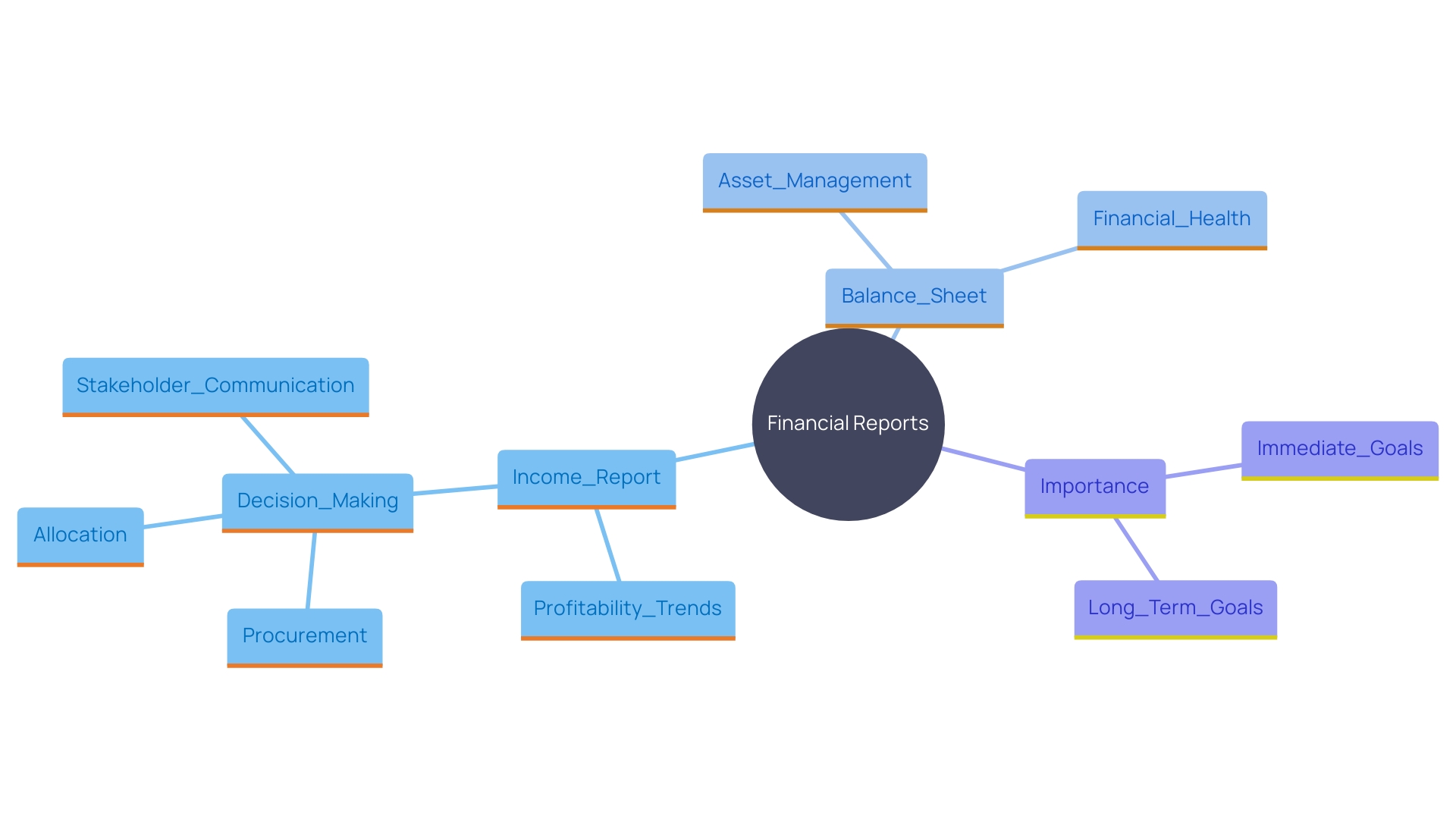
Evaluating Financial Ratios
Financial ratios are indispensable tools for assessing the health of a business. They distill complex monetary data into comprehensible metrics, enabling clearer insights into liquidity, solvency, and leverage. Key ratios like the current ratio, quick ratio, and debt-to-equity ratio give an overview of a company's capacity to fulfill short-term obligations, its immediate liquidity, and its overall structure. Regularly monitoring these ratios allows for proactive risk management and informed decision-making. As indicated in economic analysis, these ratios assist in comparing a business with its competitors and industry benchmarks, rendering them vital for efficient monetary planning and strategy formulation.
Identifying Strengths and Weaknesses
A thorough examination of monetary information and ratios is crucial for recognizing particular strengths and weaknesses within an organization. 'This process begins with collecting internal information such as monetary reports, customer feedback surveys, and employee evaluations, along with external data including industry trends and news articles.'. This detailed insight can inform strategic decisions, allowing businesses to capitalize on strengths while addressing weaknesses.
For instance, monetary statements provide a clear picture of a company's revenue, expenses, assets, and liabilities, which are crucial for conducting a SWOT analysis. Comprehending these components aids in creating successful monetary strategies that correspond with both immediate operational requirements and long-term economic objectives.
Furthermore, by utilizing tools such as Power Query and Power BI, companies can improve productivity and visualize their analyses, transforming intricate information into actionable insights. This approach not only drives sustainable growth but also improves asset utilization, ensuring better value creation over time.
As the economic environment changes, those who utilize the capabilities of information analysis will obtain a competitive advantage. Data analysis converts unprocessed information into practical economic insights, facilitating informed decision-making in domains spanning from risk evaluation to operational effectiveness. Ultimately, it's about turning data into strategic advantages that propel the organization forward.
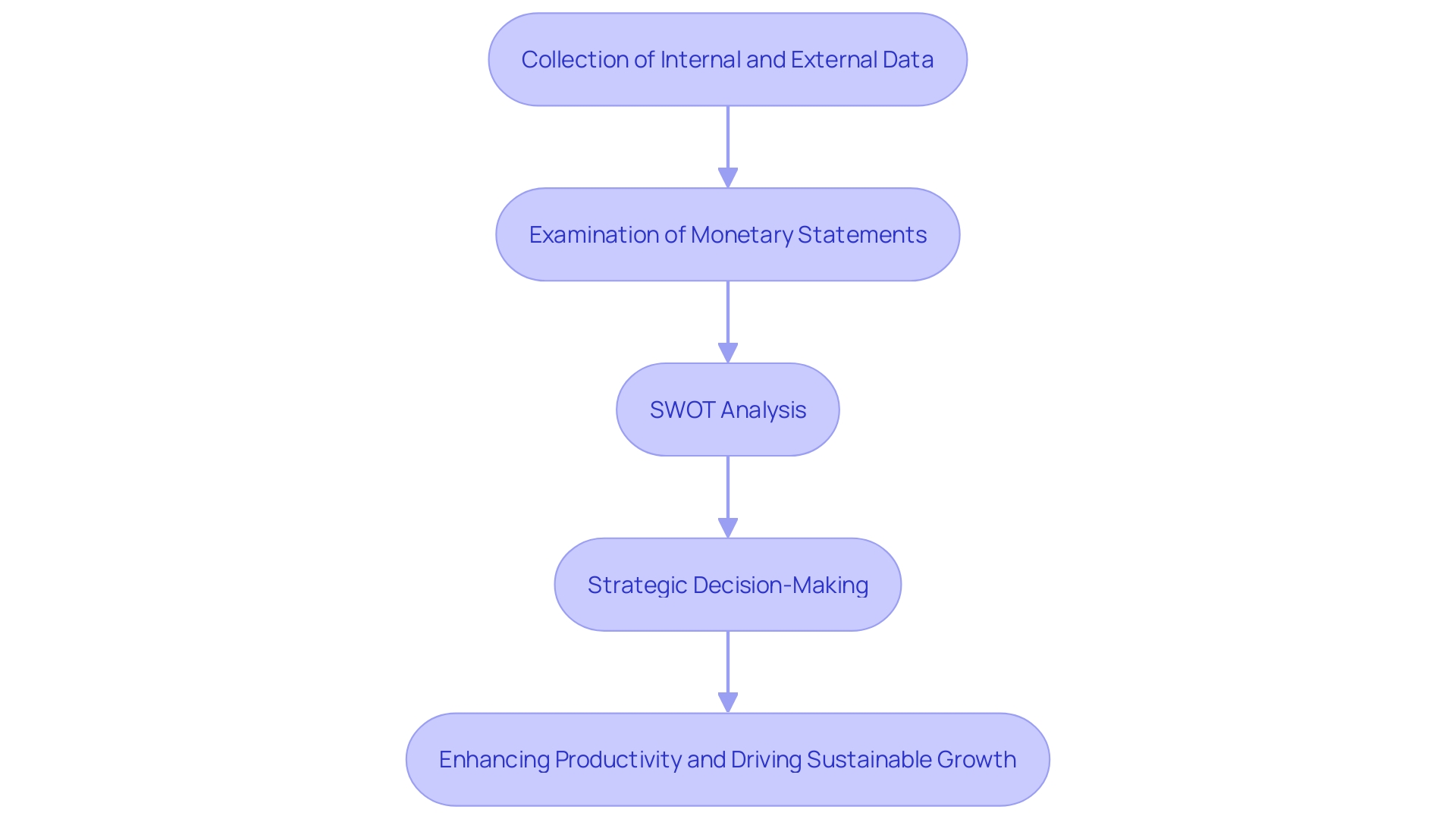
Setting Financial Goals
Setting clear, measurable monetary objectives is crucial in directing your enterprise's economic strategy. Align these goals with overarching organizational objectives, ensuring they encompass key targets such as revenue growth, expense management, and profitability. Revisiting these goals regularly is crucial to maintaining their relevance and effectiveness. For example, comprehending your monetary requirements, such as how much investment is needed to maintain and expand the enterprise, is crucial. Developing a comprehensive monetary strategy, which encompasses a budget to monitor income and expenditures, aids in converting your business vision into tangible fiscal forecasts. This approach not only supports sound economic planning but also ensures that your strategy remains adaptable to changing circumstances and opportunities.
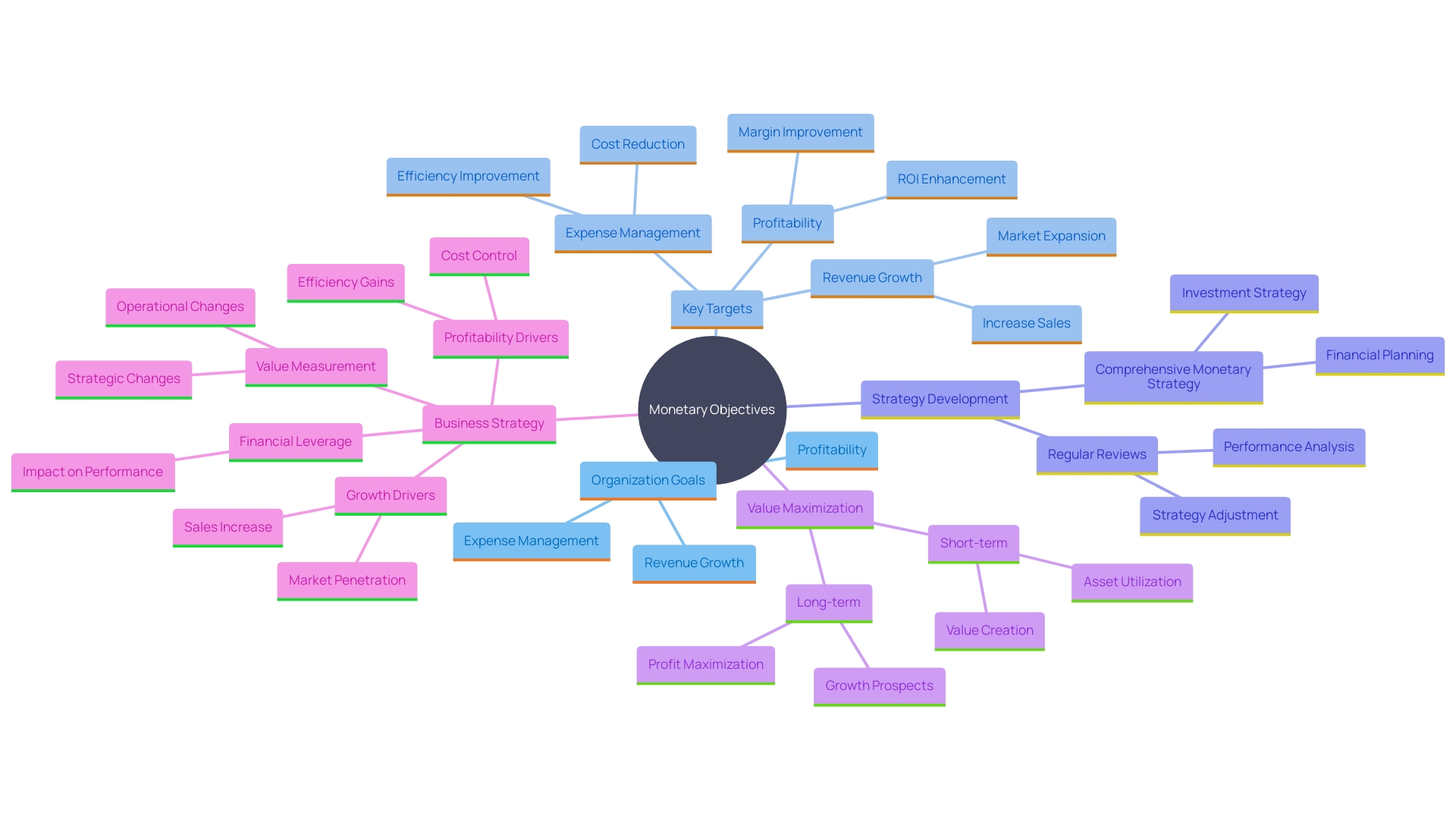
Developing an Action Plan
'Once monetary goals are set, it's crucial to create a comprehensive action plan that outlines specific steps, responsibilities, and timelines.'. This plan should prioritize initiatives that directly affect economic well-being, ensuring efficient resource allocation. A well-crafted action plan acts as a detailed blueprint, guiding the organization from its current status to its desired state.
Start by comprehending and overseeing cash flow, the essential element of any enterprise. This involves tracking the money coming in and going out, ensuring that the entity can cover its expenses and grow. Moreover, utilizing a budget template can streamline the budgeting process, offering a clear structure for arranging monetary data and making informed choices.
For example, a successful business budget not only reflects a company’s goals and priorities but also includes strategies for managing debtors and controlling credit. Effective credit control ensures only suitable customers are given trade credit and that they adhere to the credit period, reducing cash flow problems caused by bad debts.
Moreover, keeping liquid assets, such as cash and easily convertible items, allows for swift responses to monetary needs. Fixed assets, intended for long-term use, should be managed to support ongoing operations without compromising liquidity.
The action plan should also incorporate budget forecasts that address procurement, allocation, return on investment, and cash management. Clear communication of the monetary aspects can persuade potential supporters of the venture's viability. As Paisley Demby observes, converting your enterprise concept into believable monetary forecasts is crucial for obtaining funding and attaining economic stability.
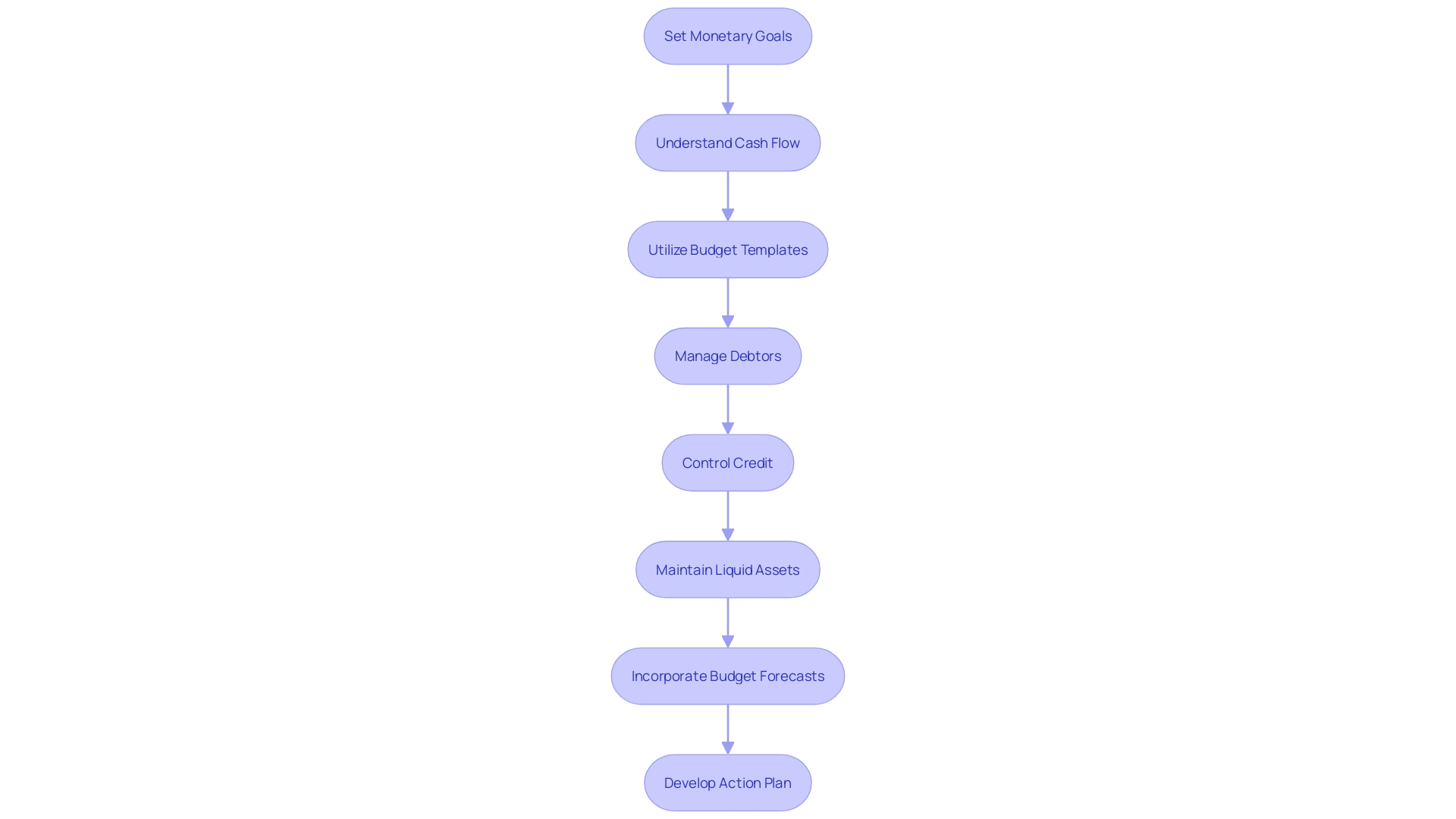
Continuous Monitoring and Adaptation
Financial health is dynamic and requires continuous monitoring to ensure sustained performance. Creating a routine for examining monetary information and modifying tactics accordingly is essential for companies to remain competitive. This adaptive approach allows firms to respond swiftly to changing market conditions and internal challenges. For instance, TBC Bank, the leading monetary institution in Georgia, has successfully transitioned from large-scale operations to a flexible, continuous delivery model. This transformation has enabled them to improve time-to-market for digital products, enhancing the overall banking experience for their customers. Similarly, M&T Bank, with its 165-year history, has recognized the importance of maintaining high-quality software standards to meet stringent regulatory requirements and protect sensitive data. By continuously monitoring and adjusting their financial strategies, these banks have managed to navigate the complexities of the modern financial landscape effectively.
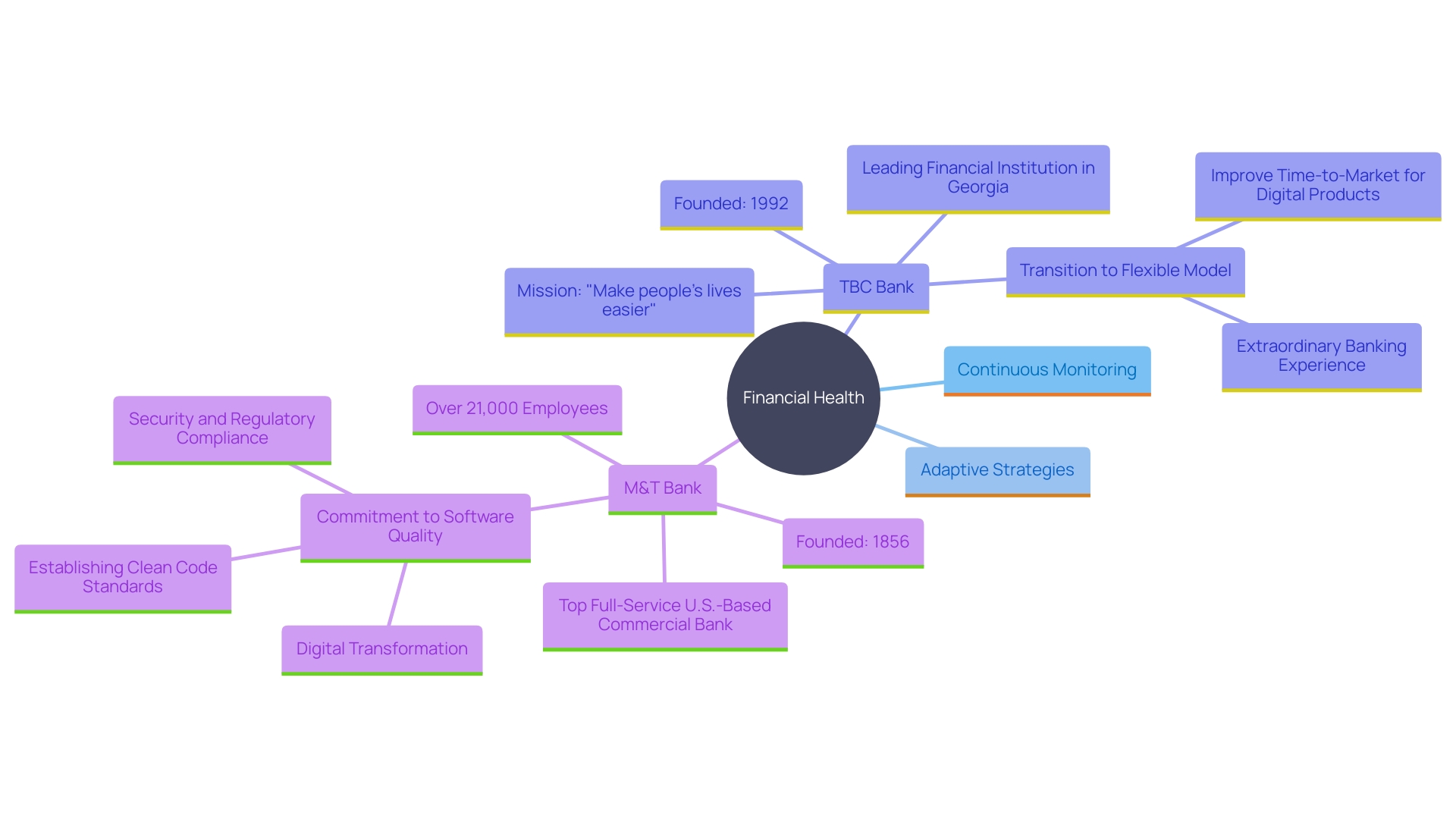
Conclusion
The journey toward robust financial management involves a series of critical steps that ensure a company’s financial health and growth potential. Gathering comprehensive financial data is the foundation, enabling businesses to form a clear picture of their financial standing through detailed income statements, balance sheets, and cash flow statements. This data not only informs internal management but also builds trust with investors and stakeholders.
Analyzing key financial statements allows businesses to uncover profitability trends and assess their financial position. By understanding the dynamics between income and expenses, decision-makers can make informed choices that align with both immediate needs and long-term goals. Evaluating financial ratios further enhances this understanding, offering insights into liquidity, solvency, and overall financial structure.
These metrics are essential for benchmarking performance against industry standards and guiding strategic planning.
Identifying strengths and weaknesses within the financial framework is crucial for informed decision-making. Leveraging both internal and external data can drive strategic initiatives that capitalize on advantages while addressing vulnerabilities. Setting clear financial goals aligned with broader business objectives provides a roadmap for success.
Regularly revisiting these goals ensures their relevance and adaptability to evolving market conditions.
Developing a detailed action plan to achieve these goals is paramount. This plan should outline specific steps and responsibilities, ensuring that financial initiatives are prioritized effectively. Continuous monitoring and adaptation of financial strategies enable businesses to remain agile and responsive to changes in the market landscape.
Organizations that embrace these practices not only foster financial stability but also position themselves for sustained growth and success in an ever-changing financial environment.




